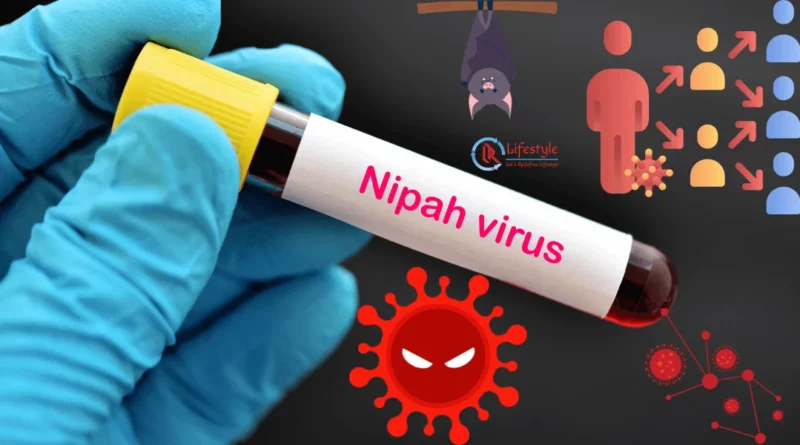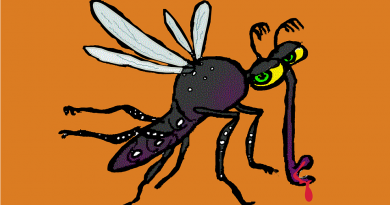Nipah Virus: A Comprehensive Guide to the Deadly Pathogen
Introduction
In the realm of emerging infectious diseases, the Nipah virus has garnered significant attention due to its deadly nature and potential for outbreaks. This zoonotic virus, which means it can be transmitted from animals to humans, has been responsible for sporadic but severe outbreaks in several countries, including Malaysia, Singapore, Bangladesh, and India. In this comprehensive guide, we will delve into the world of the Nipah virus, exploring its origins, transmission, symptoms, prevention, and efforts to combat its spread.
Understanding the Nipah Virus
The Nipah virus (NiV) was first identified in 1998-1999 during an outbreak in Malaysia, primarily affecting pig farmers and those in close contact with infected pigs. The virus belongs to the Paramyxoviridae family and is part of the Henipavirus genus, which also includes the Hendra virus. It is transmitted to humans through contact with infected animals, consumption of contaminated food, or direct human-to-human transmission, making it a significant public health concern.
Origins and Reservoirs
Fruit bats, specifically those belonging to the Pteropus genus, are considered the natural reservoirs of the Nipah virus. These bats do not show any signs of illness but can shed the virus in their urine, saliva, and excreta. When other animals, such as pigs or horses, come into contact with these contaminated substances or consume partially eaten fruit dropped by bats, they can become infected.
Transmission
Human infections with the Nipah virus have occurred after close contact with infected bats or their secretions, as well as through the consumption of contaminated food products, particularly raw date palm sap. Human-to-human transmission is also a significant concern, often seen in healthcare settings where proper infection control measures are lacking.
During the initial outbreak in Malaysia, which also affected Singapore, most human infections were the result of direct contact with sick pigs or their contaminated tissues. Transmission likely occurred through unprotected exposure to secretions from the pigs or contact with the tissue of infected animals.
In subsequent outbreaks in Bangladesh and India, the primary source of infection appeared to be the consumption of fruits or fruit products (such as raw date palm juice) that were contaminated with urine or saliva from infected fruit bats.
Currently, there are no studies available regarding how long the Nipah virus can persist in bodily fluids or the environment, including fruits.
Human-to-human transmission of the Nipah virus has also been documented among family members and caregivers of infected patients.
In later outbreaks in Bangladesh and India, the Nipah virus spread directly from person to person through close contact with the secretions and excretions of infected individuals. In Siliguri, India, in 2001, there were reports of virus transmission within a healthcare setting, with 75% of cases occurring among hospital staff and visitors. From 2001 to 2008, approximately half of the reported cases in Bangladesh resulted from human-to-human transmission during the care of infected patients.
Symptoms
Nipah virus infection can range from asymptomatic (no symptoms) to severe. The incubation period can vary from 4 to 14 days after exposure. Common symptoms include fever, headache, muscle pain, vomiting, and sore throat. In severe cases, the virus can lead to encephalitis (inflammation of the brain), resulting in altered consciousness, seizures, and coma. The mortality rate for Nipah virus infection is estimated to be around 40-75%, making it a highly lethal pathogen.
Prevention and Control
Due to the lack of a specific antiviral treatment for Nipah virus infection, preventive measures play a critical role in controlling its spread. Public health strategies focus on early detection of cases, isolation of infected individuals, and implementing infection control practices in healthcare settings. Efforts to prevent human-to-human transmission include strict hygiene practices, such as handwashing, and the use of personal protective equipment (PPE) by healthcare workers.
Outbreaks and Global Response
Nipah virus outbreaks have occurred sporadically in South and Southeast Asia, leading to significant public health challenges. These outbreaks have prompted international collaborations and research efforts to better understand the virus, develop diagnostic tools, and work toward potential vaccines and therapeutics. Organizations like the World Health Organization (WHO) are actively involved in supporting affected countries and coordinating global responses to Nipah virus outbreaks.
Dos and Don’ts for Nipah Virus Prevention
Do’s
- Practice Good Hygiene: Wash your hands frequently with soap and water, especially after contact with animals or animal products.
- Use Personal Protective Equipment (PPE): If you are a healthcare worker or in close contact with infected individuals, use appropriate PPE, such as masks, gloves, gowns, and eye protection.
- Cook Food Thoroughly: Ensure that all fruits, vegetables, and meat products are cooked or prepared thoroughly before consumption.
- Avoid Close Contact with Bats: Do not handle bats or their excreta (droppings). Avoid visiting places where bats are known to roost.
- Educate Yourself: Stay informed about Nipah virus outbreaks in your region and follow guidance from local health authorities.
Don’ts
Don’t Consume Raw Date Palm Sap: Raw date palm sap can be a source of Nipah virus transmission. Avoid drinking it unless it has been properly processed and treated.
Avoid Close Contact with Infected Individuals: If someone is infected with the Nipah virus, avoid close physical contact, especially if they exhibit symptoms.
Don’t Eat Contaminated Fruits: If you suspect that fruits have been contaminated with bat droppings or saliva, do not consume them.
Don’t Panic: While the Nipah virus can be severe, outbreaks are relatively rare. Stay informed, follow preventive measures, and seek medical care promptly if you develop symptoms.
Don’t Delay Medical Attention: If you or someone you know experiences symptoms like fever, headache, vomiting, or altered consciousness, seek immediate medical attention. Early diagnosis and isolation are crucial.
Conclusion
The Nipah virus remains a formidable threat, with the potential for future outbreaks that can have devastating consequences. Understanding the virus’s origins, transmission, symptoms, and preventive measures is crucial for both healthcare professionals and the general public. As global efforts continue to combat this deadly pathogen, staying informed and following recommended safety practices are essential steps in preventing the spread of the Nipah virus and safeguarding public health.
You might be interested: Fatty Liver: Causes, Symptoms, Treatment, and FAQs
Frequently Asked Questions About Nipah virus (NiV)
1. What is the Nipah virus?
The Nipah virus (NiV) is a zoonotic virus that can be transmitted from animals to humans. It belongs to the Paramyxoviridae family and is part of the Henipavirus genus.
2. How is the Nipah virus transmitted to humans?
The primary mode of transmission is through direct contact with infected animals, such as bats, or consumption of contaminated food products, particularly raw date palm sap. Human-to-human transmission can also occur, especially in healthcare settings.
3. What are the symptoms of Nipah virus infection?
Symptoms of Nipah virus infection can include fever, headache, muscle pain, vomiting, sore throat, and in severe cases, encephalitis (inflammation of the brain) with altered consciousness, seizures, and coma.
4. Is there a specific treatment for Nipah virus infection?
Currently, there is no specific antiviral treatment for Nipah virus infection. Supportive care and preventive measures, such as isolation and infection control, are critical in managing cases.
5. What are the preventive measures against the Nipah virus?
Preventive measures include avoiding contact with infected animals, especially bats, and refraining from consuming raw date palm sap. Proper hygiene practices, including handwashing, and the use of personal protective equipment (PPE) for healthcare workers are essential for preventing human-to-human transmission.
6. Is there a vaccine for the Nipah virus?
While there are ongoing research and development efforts to create a vaccine for the Nipah virus, there is currently no licensed vaccine available. Several vaccine candidates are being studied in preclinical and clinical trials.
7. How deadly is Nipah virus infection?
Nipah virus infection can be highly lethal, with mortality rates estimated to be around 40-75%. The severity of the disease can vary, but severe cases often lead to fatal outcomes.
8. What organizations are involved in responding to Nipah virus outbreaks?
International organizations such as the World Health Organization (WHO) actively support affected countries during Nipah virus outbreaks. Local health authorities, research institutions, and healthcare workers also play crucial roles in response efforts.
9. Are there any travel restrictions during Nipah virus outbreaks?
Travel restrictions may be implemented in affected areas to prevent the spread of the virus. Travelers are advised to stay informed about current outbreak situations and follow guidance from health authorities.
10. What should I do if I suspect a Nipah virus infection?
If you suspect you have been exposed to the Nipah virus or experience symptoms, seek immediate medical attention. It is essential to follow healthcare protocols to prevent potential transmission to others.
Note: Please note that these recommendations are general guidelines. During an outbreak, local health authorities may issue specific guidance and measures to protect public health. Always follow the advice of healthcare professionals and stay informed about the situation in your area.
Also Read:
Understanding Dengue: Causes, Symptoms, Prevention, and FAQs
For News related to entertainment visit our entertainment website:
https://www.glamworldtalks.com/




